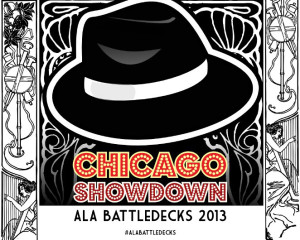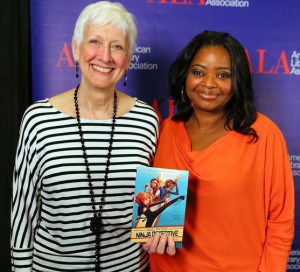
Ray Bradbury’s influence on literature, film, television, art, library advocacy, and more is unparalleled. The late author was one of our great thinkers: curious, unflappable, and passionate about truth, literacy, and open access of information. “Book on Fire: Celebrating the 60th Anniversary of Fahrenheit 451,” a panel discussion sponsored by the Intellectual Freedom Committee, celebrated the author’s most acclaimed work, the dystopian novel, Fahrenheit 451, which envisions a frightening future where books are outlawed.
Sam Weller, author of the Bradbury biography, The Bradbury Chronicles, John Eller, chancellor’s professor of English and director of the Center for Ray Bradbury Studies at the Indiana University School of Liberal Arts, and librarian Lois Buckman of Conroe (Tex.) Independent School District, shared their experiences both with Bradbury himself and with censorship issues related to Fahrenheit 451.
Weller worked on the biography with Bradbury for over 12 years, and he grew to know the man as both a mentor and friend. He shared many anecdotes, but the most interesting story detailed a discovery of historical proportions.
Bradbury famously claimed to have never used a day planner or calendar in his entire life. One day, while visiting Bradbury’s home, Weller explored while Bradbury napped. He came upon Bradbury’s writing desk and decided to remove the drawers and look inside the desk to see if any loose papers of note might be stuck in the crevices. Buried deep in the back of a drawer space, Weller found a planner from 1953 that records the exact day that Bradbury found the title for his most famous work. On that particular day, Bradbury had called a fire department to find the temperature at which paper burns. Written on the page were two temps: Celsius 233 and Fahrenheit 451. Bradbury’s musical ear knew immediately which one to choose for the title of his new book.
Eller further detailed Bradbury’s influences and Fahrenheit 451’s impact. He described how, though he was an advocate and practitioner of science fiction, Bradbury hardly ever read books from the genre. However, he was greatly influenced by Arthur Koestler’s novel Darkness at Noon, which describes hellish living conditions in the Soviet Union. Eller described how traces of Fahrenheit 451 can be found in the earlier Bradbury short story “Carnival of Madness,” and his address to the Los Angeles Chapter of the National Women’s Committee of Brandeis University titled, “No Man Is an Island.” Eller also revealed a major snafu that resulted in a censored version of Fahrenheit 451 being published. In the early 1970s, Ballantine Books issued a high school edition of the book, with Bradbury’s blessing, that omitted certain words and phrases—99 in all. However, a publishing error led to the high school version replacing the original version in all print runs. As a result, from 1973 to 1979, the only version of Fahrenheit 451 that was printed was the highly edited edition. Bradbury and the publisher were only made aware of the error when a high school class wrote the author asking him why their teacher’s older version of Fahrenheit differed from their new copies.
Buckman, a librarian at Caney Creek High School in East Montgomery County, Texas, was on the front lines of Fahrenheit 451 censorship, but her experiences did not result from a simple publishing error. In September 2006, a parent of a Caney Creek student requested that Fahrenheit 451 be removed from the school’s curriculum and library, as well as the local public library, citing language and religious concerns. The school board appointed a committee consisting of Buckman, students, and teachers to review the complaint. They rejected it. Ironically, the parent’s objections to the book occurred during the American Library Association’s Banned Books Week, a coincidence that drew laughs from all present at the panel discussion.


